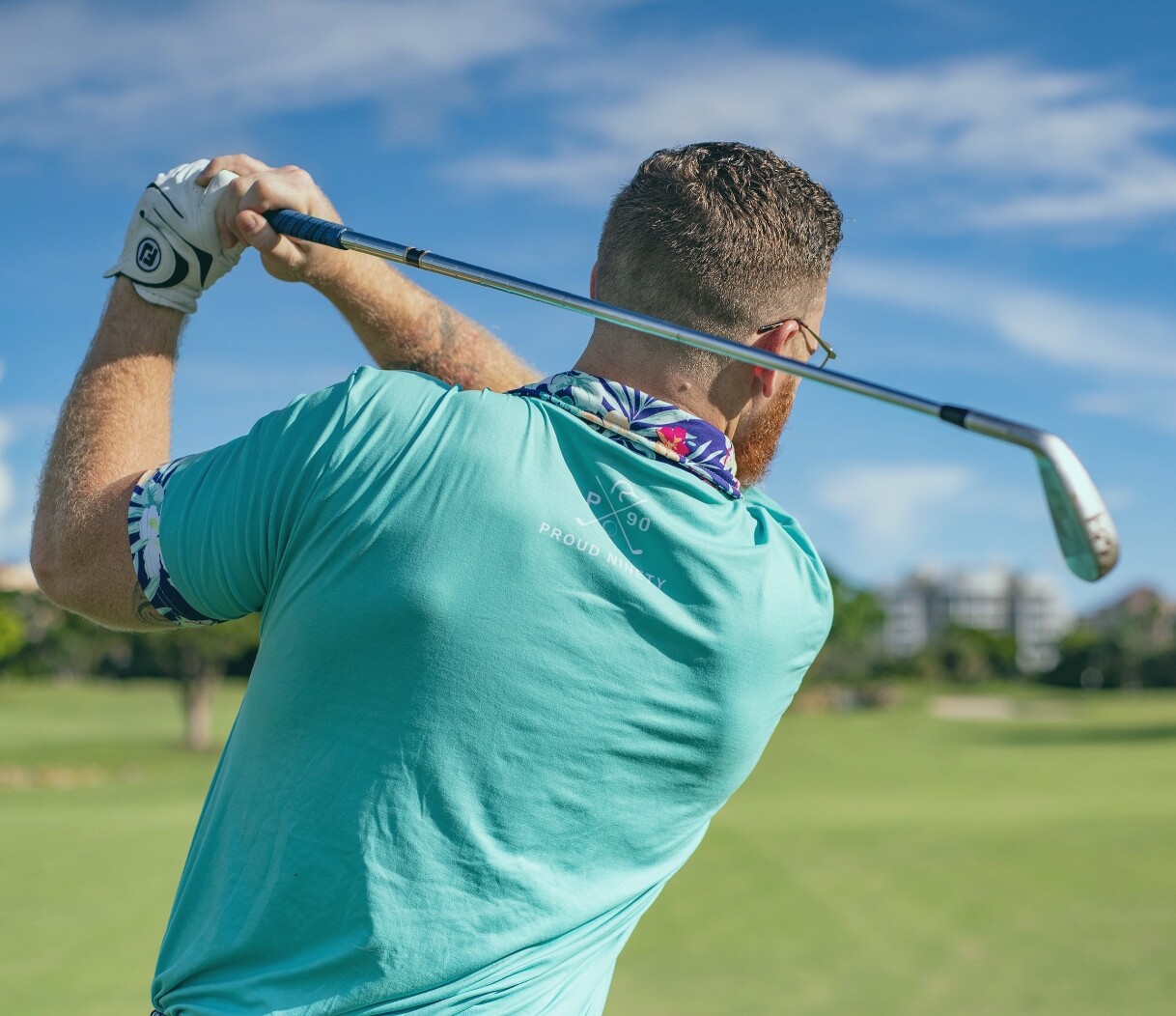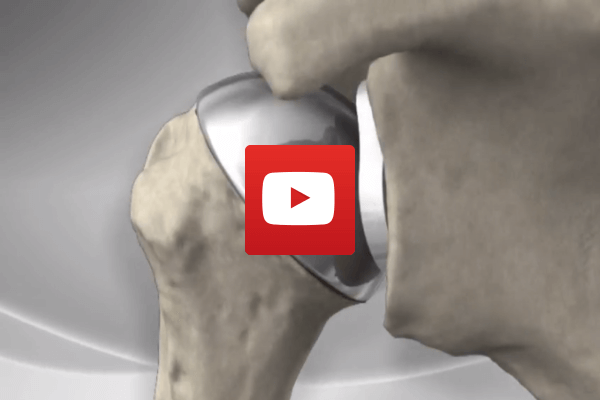Conventional
Shoulder Replacement
Also known as total shoulder replacement arthroplasty or anatomical shoulder replacement.
A total shoulder replacement involves removing the damaged parts of the shoulder joint and replacing them with artificial shoulder joint. A plastic shoulder prosthesis is fitted into the shoulder socket, and a metal ball is attached to the top of the upper arm bone.
This artificial structure mimics the normal anatomy of the shoulder, allowing it to function normally while reducing the opportunity for rubbing or inflammation that causes pain.

Who might need shoulder joint replacement surgery?
While the primary goal of a shoulder replacement is pain relief, it also aims to improve shoulder motion, strength and function to help patients return to an activity level as near to normal as possible. People who have undergone this procedure usually return to sports they love, such as golf, tennis or swimming, while also enjoying fitness initiatives such as yoga and pilates.
You may require a total shoulder replacement if you have:

Is a total shoulder replacement right for me?
If you have shoulder pain that is interfering with your daily life, and conservative treatments haven’t helped, a shoulder joint replacement might be a productive solution.
Shoulder replacement surgery is a safe and effective procedure that’s been performed successfully for decades worldwide.
There are several reasons Dr McLean may recommend a shoulder replacement surgery. People who benefit most from this type of surgery usually have:
- Severe shoulder pain that inhibits everyday activities such as reaching, dressing, washing, and driving
- Moderate to severe pain even while resting, and especially at night
- Loss of motion and/or weakness in the shoulder
- Failure to substantially improve after other treatment avenues have been tried, including anti-inflammatory medications, cortisone injections, and physical therapy
Total shoulder replacement surgery evaluation
What does orthopaedic evaluation involve?
If you match two or more of the conditions above, your GP may refer you to an orthopaedic surgeon for a thorough evaluation. Dr James McLean consults from several convenient orthopaedic practice locations around Adelaide.
During your evaluation, Dr McLean will first gather information about your medical history and your general health. From there, a physical examination will help assess your shoulder’s range of motion, stability and strength.
X-rays are often required to determine the extent of damage in your shoulder. Dr McLean normally orders other tests, such as a CT scan, blood tests and rarely an MRI scan, to further assess the condition of the bone and soft tissues in your shoulder.
Dr McLean will discuss whether a shoulder replacement is the best method to relieve your pain and restore your normal function.
Shoulder surgery is one of Dr McLean’s areas of special interest. He completed two international fellowships concentrating on shoulder surgery, has published shoulder and upper limb articles in over 20 publications, and is actively participating in multiple research studies. Dr McLean is also actively involved with the Australian Joint Registry’s pilot study into patient-reported outcome measures following shoulder arthroplasty surgery.
Preparing for total shoulder replacement surgery
Dr McLean may request that you schedule an assessment with a physician or an anaesthetist before your procedure.
This is to ensure that you are healthy enough to proceed to surgery.
Around a week before your surgery, you will be advised to stop taking certain medications, such as anti-inflammatories, blood thinners and arthritis therapies, as they can promote excessive bleeding.
You will also be advised on how to plan for your shoulder replacement recovery. The likely hospital stay after surgery is 2-3 days. From there, you may need assistance with daily tasks at home, such as dressing, cooking, and bathing, for around 6 weeks after your surgery.
If you don’t have any support at home, Dr McLean’s friendly administrative team can help you organise a short stay in a rehabilitation facility while you regain your independence. This is often facilitated by the nursing team involved in your care.
Driving after your surgery is NOT recommended for 6 weeks, so you also need to arrange for someone to take you home when you leave the hospital.
The conventional shoulder replacement surgery procedure
Total shoulder replacement procedure requires open surgery via an incision along the front of the shoulder and upper arm.
You will be under anaesthetic for the procedure, which takes approximately 2 hours. An inter-scalene nerve block is normally used to block your nerves during and after the surgery. This nerve block normally takes around 12-18 hours to wear off.
During the surgery, Dr McLean uses a muscle-splitting approach that begins by separating the deltoid and pectoral muscles so he can access the shoulder in a largely nerve-free environment. To access the ‘ball and socket’ area of the shoulder, a cut is made in one of the front rotator cuff muscles.
When this is done, Dr McLean makes sure any arthritic sections are removed, and then replaces the humeral head of the shoulder (the ‘ball’) with a metal ball. He will also place a plastic surface prosthesis on the glenoid (the ‘socket’).
The rotator cuff muscle is then stitched back together, the incision is stitched and cleaned, and a bandage is applied. You will be moved to a recovery room, where you will remain for a few hours as you come out of the anesthesia. You will be taken to your hospital room afterwards.
What to expect after shoulder replacement surgery
Shoulder replacement surgery is a major operation, so it’s likely you will experience some pain during your recovery.
This is part of the body’s normal healing process. You will be given pain medication, when and if required, for a few weeks after the procedure. Pain relief after shoulder replacement may include oral painkillers, as well as using ice packs to reduce swelling.
When you leave the hospital a couple of days after your surgery, your arm will be in a sling. A sling is normally recommended for 2 weeks (sometimes longer if there was a lot of damage identified at the time of surgery).
Be prepared to have limited arm function for 4 weeks, and avoid heavy lifting, pulling or pushing. You will be given gentle rehabilitation exercises designed to stimulate healing and regain strength.
You are also not permitted to drive after shoulder arthroplasty until you have been given the green light from Dr McLean and can drive safely. Visit this page for more detail about driving after shoulder surgery.
Follow-up visits with Dr McLean will be required to monitor your healing and rehabilitation.
How to recover from shoulder replacement surgery
The prognosis after shoulder replacement surgery is excellent, with multiple studies finding a high satisfaction rate of up to 95% after the procedure. It’s estimated that most modern shoulder replacements will last for 15 to 20 years, with revision surgery rarely needed.
First two weeks following surgery
Your arm will be in a sling, and you’ll have little mobility and function. Shoulder exercises are limited as the priority is getting the skin and soft tissues to heal without jeopardising the surgery.
Two weeks later
Dr McLean’s practice nurse will review your wound. A sling may not be required, and your shoulder movements may be increased. You will be recommended gentle rehabilitation exercises to regain shoulder range and aid healing.
Six weeks later
You have resumed most of your daily activities by now, but still must be careful not to perform heavy lifting, pushing or pulling. Rehabilitation exercises continue, and strengthening begins.
Three months later
You’ll feel reasonably comfortable and have nearly half your normal range of motion back. You may still feel some weakness. Shoulder dislocation precautions can be lifted.
Six months later
You’ll likely be pain-free by now, and your motion and strength will be improved.
One year later
You’ll either be totally pain-free, or at worst experience an occasional ache in cold weather or after excessive activity. Likewise, you’ll be back to normal, or near-normal, strength and function. Your range will be close to maximal improvement expected.
How Dr James McLean can help
Dr James McLean performs shoulder surgery and other various treatments for a wide variety of shoulder conditions in Adelaide.
With his extensive experience in treating upper limb conditions, he works with his patients to create tailored treatment plans which yield the best possible outcomes for their injuries.
Click here for more information on other conditions involving the shoulder, hand, wrist, and elbow which Dr James McLean has a special interest in treating.
Once you have a referral…
Book your consultation here.


